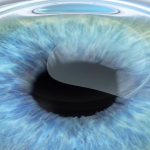LASIK Eye Surgery – What You Need to Know
LASIK is one of the most popular and effective ways to correct vision. It helps people reduce or even completely get rid of their dependence on glasses or contact lenses. LASIK stands for Laser-Assisted in situ Keratomileusis, a procedure that reshapes the cornea so that light focuses correctly on the retina. This improves vision in common problems like nearsightedness (myopia), farsightedness (hyperopia), and astigmatism.
How LASIK works
In eyes with refractive errors, the cornea does not bend light properly. This causes blurry or distorted vision. During LASIK, a laser is used to precisely reshape the cornea. This allows light rays to focus sharply on the retina, giving clearer vision. Most procedures take just a few minutes per eye and are performed under numbing eye drops, so there is no pain during surgery.
What is Femto LASIK?
Femto LASIK is an advanced type of LASIK where the corneal flap is created using a femtosecond laser instead of a mechanical blade. This bladeless technology allows for more precise and uniform flaps. It reduces the chance of complications and often leads to faster healing.
What is CONTURA LASIK?
CONTURA Vision, also known as topography-guided LASIK, takes personalization to another level. It uses detailed maps of your cornea’s unique surface to guide the laser treatment. This means it can correct not only your spectacle number but also subtle irregularities on the cornea, which may improve the overall quality of vision. Many patients report clearer night vision and fewer issues like glare and halos with CONTURA compared to standard LASIK.
Are you a good candidate?
You may be suitable for LASIK if your glasses prescription has been stable for at least a year, you are over 20, and your eyes are healthy. It is important that you are not pregnant or breastfeeding. People with very thin corneas, certain corneal diseases, or uncontrolled dry eyes may not be ideal candidates. A detailed eye examination and corneal scans are necessary to decide if LASIK, Femto LASIK, or CONTURA is right for you. You will also undergo 200 degrees Optos retinal scanning to ensure your retina is healthy before any laser correction procedure.
If you are a very high myope, you may not be suitable for femto LASIK or CONTURA laser. However you may be suitable for ICL procedure to get rid of your high minus glasses.
Preparing for LASIK
Your surgeon will give specific instructions, but generally you will be asked to stop wearing contact lenses for a period before surgery. Contact lenses can temporarily change the shape of the cornea. You should avoid using makeup, lotions, or perfumes on the day of the procedure and arrange for someone to drive you home afterwards.
What to expect after the procedure
Vision often improves within 24 hours of Femto-LASIK, though it may fluctuate for a few weeks. Most people return to their normal routine in a day or two. You will need to use prescribed drops to prevent infection and reduce dryness. It is important not to rub your eyes and to follow all post-surgery instructions. Some people notice glare, halos, or slight discomfort early on, which usually improves as the eyes heal.
Why choose Femto and CONTURA LASIK?
Dr Rehman Siddiqui offer’s the latest Femto and CONTURA LASIK technology. Femto provides a safer, blade-free flap creation, while CONTURA offers highly customized treatment based on the precise shape of your eye. This means not just clearer vision, but often sharper, higher-quality vision than what standard LASIK provides. Dr Rehman also performs SMILE laser procedures. To read about SMILE laser click here.
Vision After LASIK
Approximately 90-95% of individuals who undergo LASIK achieve uncorrected vision between 20/20 and 20/40, eliminating the need for glasses or contact lenses for most daily activities.
It is essential to understand, however, that LASIK does not correct presbyopia, the natural, age-related decline in near vision that typically begins around the age of 40. Consequently, even individuals with excellent distance vision—whether naturally or following refractive surgery—will usually require reading glasses for close-up tasks as they age.
To address presbyopia, some patients consider monovision LASIK. In this approach, one eye is intentionally corrected for distance vision while the other is left mildly nearsighted to assist with near tasks. Over time, the brain adapts, using each eye for its designated purpose—distance or near vision.
It is important to note that monovision is not suitable for everyone. Before deciding on this type of correction, patients are often advised to trial monovision using contact lenses. This helps determine whether their visual system can comfortably adapt to this arrangement.
Additional information (downloadable):
LASIK Eye Surgery – What You Need to Know
Book your consultation
If you are considering LASIK or want to learn more about Femto and CONTURA options, we encourage you to book a consultation. We will thoroughly assess your eyes and discuss which approach is best for you.


